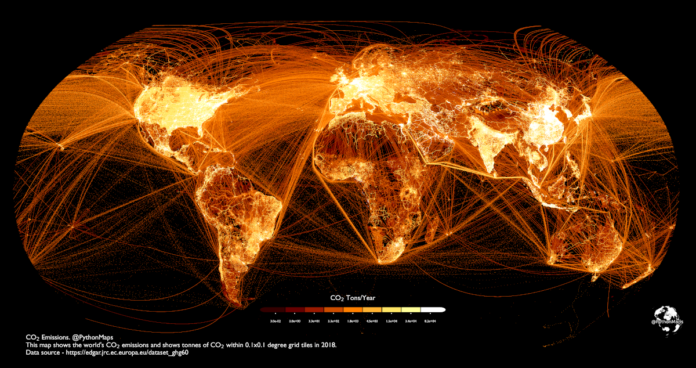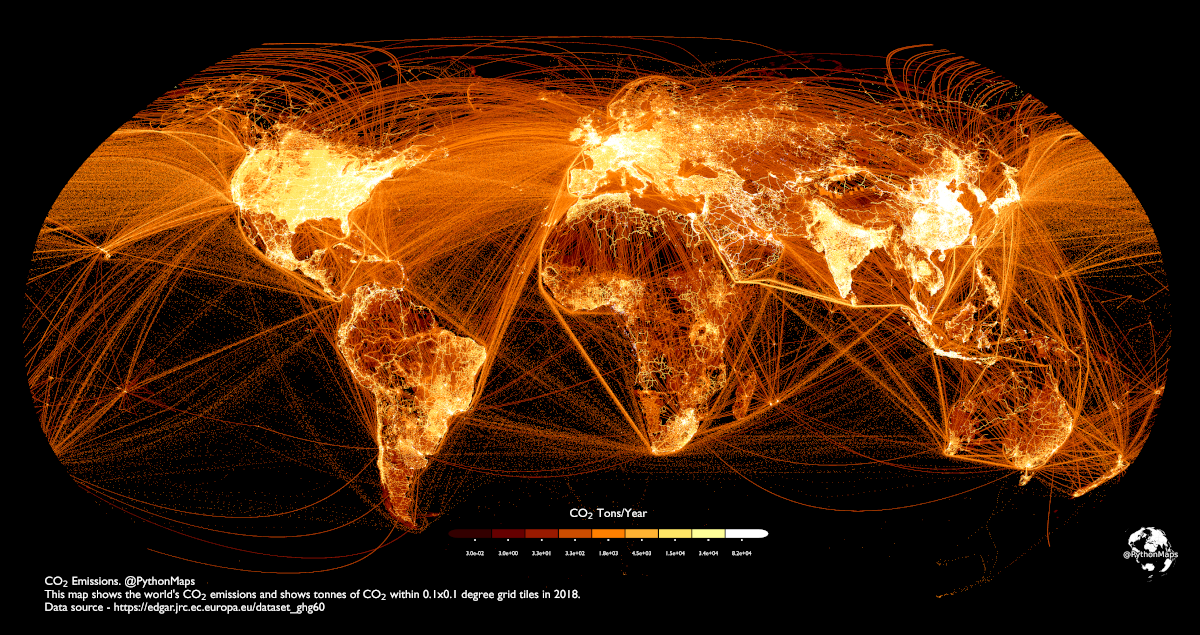Mapped: Carbon Dioxide Emissions Around the World
According to Our World in Data, the global population emits about 34 billion tonnes of carbon dioxide (CO₂) each year.
Where does all this CO₂ come from? This graphic by Adam Symington maps out carbon emissions around the world, using 2018 data from the European Commission that tracks tonnes of CO₂ per 0.1 degree grid (roughly 11 square kilometers).
This type of visualization allows us to clearly see not just population centers, but flight paths, shipping lanes, and high production areas. Let’s take a closer look at some of these concentrated (and brightly lit) regions on the map.
China, India, and the Indian Ocean
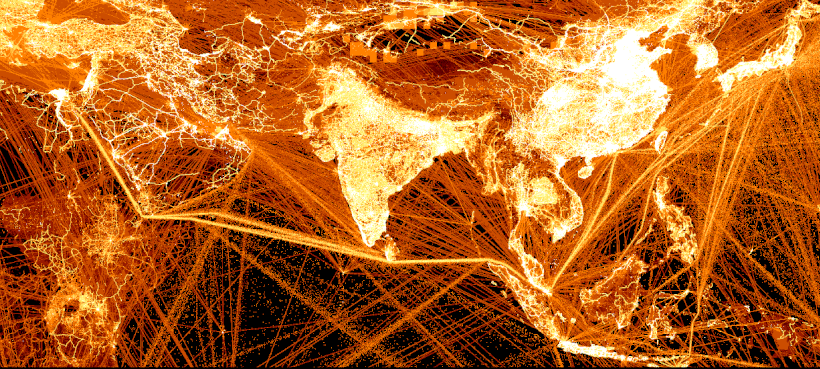
As the two most populated countries and economic forces, China and India are both significant emitters of CO₂. China in particular accounts for about 27% of global CO₂ emissions.
And looking at the oceans, we see how much shipping adds to emissions, with many shipping lanes east of China clearly outlined as well as the major Indian Ocean lane between the Strait of Malacca and the Suez Canal.
The United States and Central America
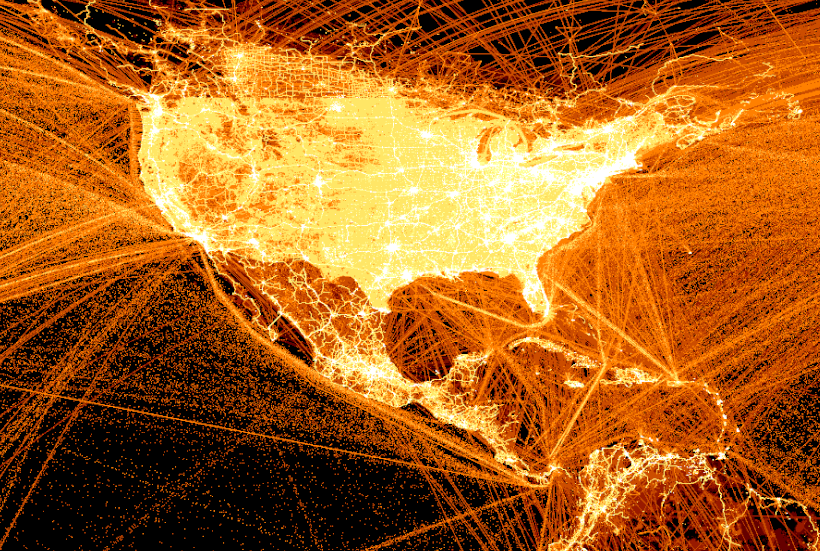
The United States is one of the world’s biggest carbon emitters. While other countries like Qatar and Saudi Arabia technically have higher emissions per capita, their overall emissions are relatively low due to smaller populations.
Across the U.S., the most brightly lit areas are major population centers like the Boston-Washington corridor, the Bay Area, and the Great Lakes. But also lit up are many of the interconnecting highways linking all these population centers, even in the less-populated middle of the country.
With so much traffic in and out of the U.S., the oceans become a murky mix of shipping and flight paths. To the south, very clearly visible is the major concentration of people around Mexico City and the traffic flowing through the Panama Canal.
South America’s Network of Emissions
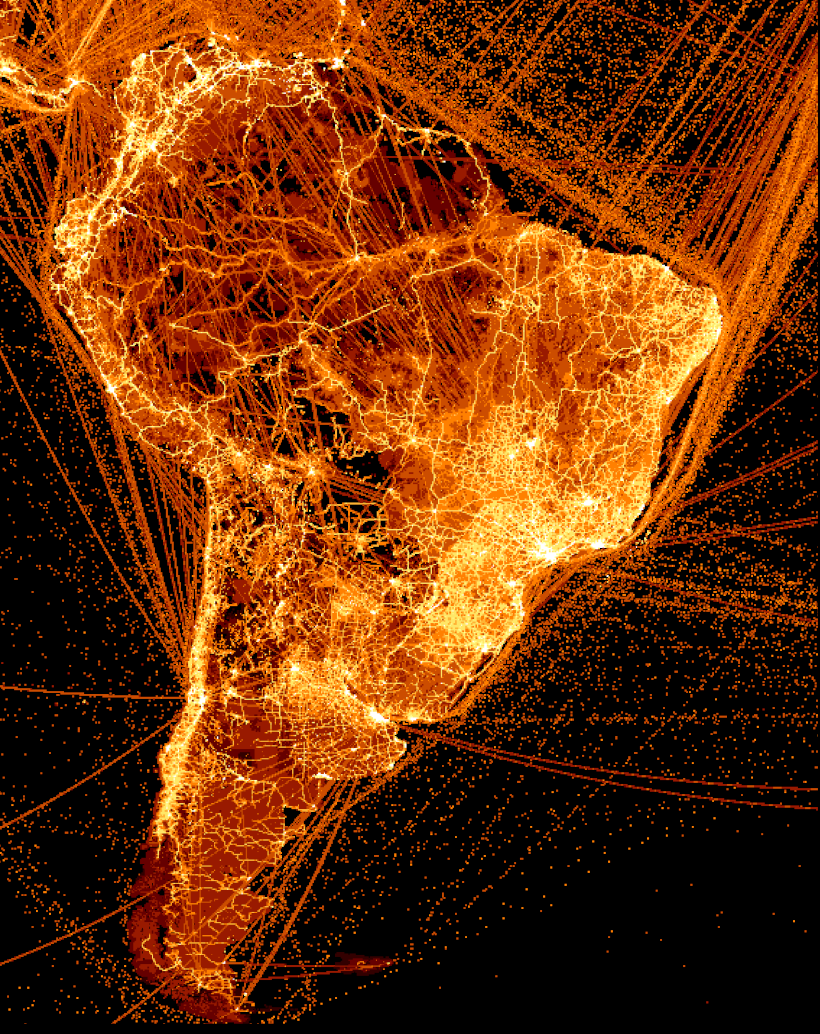
Like the other regions, some of South America’s most populated areas are also the biggest emitters, such as São Paulo and Rio in Brazil and Buenos Aires in Argentina. This map also highlights the continent’s rough terrain, with most of the population and highway emissions limited to the coasts.
However, the cities aren’t the only big emitters in the region. There are clear lines intersecting the Amazon forest in many sections where cities and roads were constructed, including the economic hub city of Manaus along the Amazon River. Likewise, the oceans have many major shipping lanes highlighted, particularly East of Brazil.
Europe and North Africa
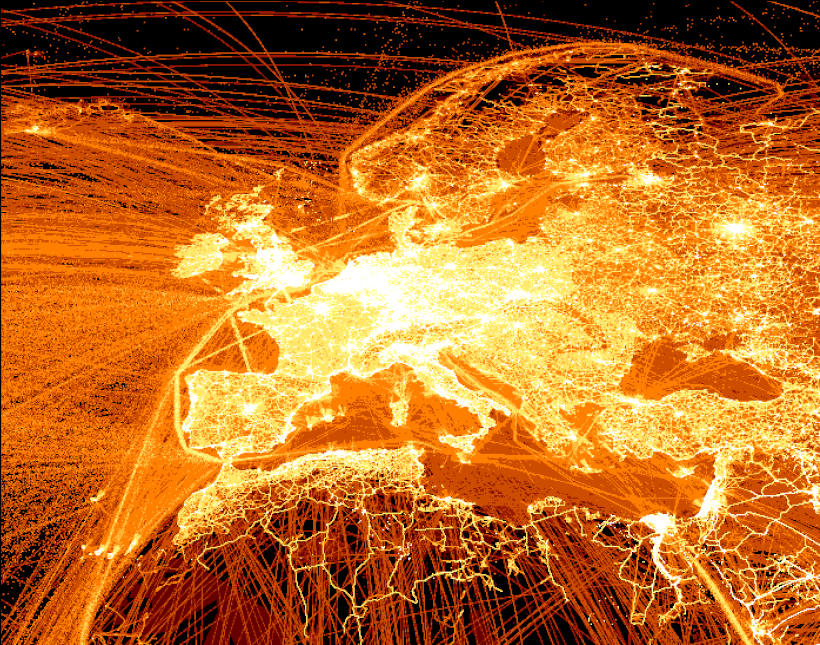
Germany is one of Europe’s biggest carbon emitters—in 2021, the country generated almost 644 million tonnes of CO₂.
Also making an impression are Italy (which is the second-highest CO₂ emitter after Germany) and the UK, as well the significant amount of trade along the English Channel.
Compared to the intricate network of cities, towns, and bustling highways spanning Europe, across the Mediterranean are far clearer and simpler lines of activity in Northern Africa. Two major exceptions are in the Middle-East, where Egypt’s Nile River and Suez Canal are massively lit up, as well as Israel on the east of the sea.
But a more significant (albeit murkier) picture is drawn by the massive amounts of shipping and flight paths illuminating the Atlantic and Mediterranean at large.
Net Zero by 2050
To mitigate the negative effects of climate change, countries around the world have made commitments to reach net-zero emissions.
Imagining the global map of emissions with these commitments in action requires a complete transformation of energy production, consumption habits, transportation infrastructure, and more. And even then, a future generated map wouldn’t be fully dark, as “net-zero” is not equivalent to zero emissions but a balance of emissions and removal.
How might this map of global emissions look in the near and distant future? And what other interesting insights can you generate by browsing the world this way?
This article was published as a part of Visual Capitalist’s Creator Program, which features data-driven visuals from some of our favorite Creators around the world.



